#McDonnell F-101 Voodoo
Explore tagged Tumblr posts
Photo

Canadian Aggressor Squadron F-101 Voodoos
10 notes
·
View notes
Link
The article, authored by Peter Suciu, chronicles the evolution and significance of the McDonnell F-101 Voodoo, an advanced military aircraft developed during the Cold War. Originally designed as a long-range escort for Strategic Air Command bombers, the F-101 was adapted into a long-range interceptor, nuclear strike aircraft, and tactical reconnaissance plane. Notable for its speed and altitude capabilities, the Voodoo's design stemmed from the XF-88 prototype. The article highlights its various configurations, including the single-seat F-101A, the two-seat F-101B, and the RF-101 reconnaissance models. It discusses its operational roles and deployments by the United States Air Force, Canadian Air Defence Group, and Taiwanese pilots, particularly during crises like the Cuban Missile Crisis and the Vietnam War. The Voodoo’s legacy is preserved in numerous museums across the globe.
#McDonnell F-101 Voodoo#Cold War#United States Air Force#Strategic Air Command#tactical reconnaissance#interceptor aircraft#nuclear deterrence#supersonic speeds#Vietnam War#aerial refueling#RF-101 variant#F-101B variant#radar systems#McDonnell Aircraft Corporation#Mach 2#photo-reconnaissance missions#fighter jet#1950s aviation technology#military aviation history#jet aircraft development.
0 notes
Text


F-101B Voodoos of the New York Air National Guard, c.1978
@Vostockposter via X
38 notes
·
View notes
Text
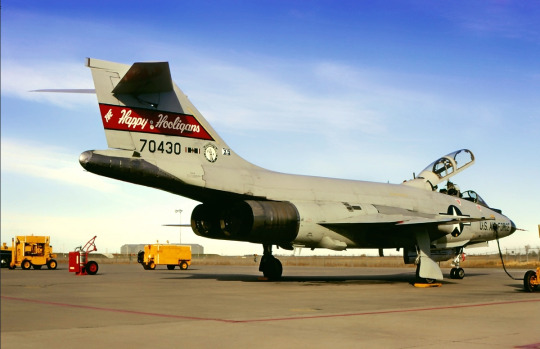
F-101B - Hector International Airport - Nov 1975
#McDonnell#F-101#Voodoo#F-101B#Fighter#Military#Air National Guard#ANG#178th FIS#Happy Hooligans#jet#aircraft
50 notes
·
View notes
Text

The war is over, go home.
#transformers#maccadams#my art#optimus prime#optimus#tf idw#the other one is my dude#oc#his names radon#hes based off a mcdonnell f 101 voodoo#and hes nuclear fighter bomber and reconnaissance aircraft
8 notes
·
View notes
Text
Family portrait...

FH-1 Phantom I and F-4 Phantom II, AV-8B Harrier, F-101 Voodoo, F-15 Eagle, F/A-18 Hornet, and F2H Banshee at the McDonnell-Douglas St. Louis, MO plant.
Through a complicated series of corporate buyouts and mergers, the AV-8B, F-15 and F/A-18 are now Boeing aircraft.
152 notes
·
View notes
Text

McDonnell F-101 Voodoo
106 notes
·
View notes
Note
Trick or Treat
You get:

McDonnell F-101 Voodoo
16 notes
·
View notes
Text

A gathering of McDonnell F-101 Voodoos
11 notes
·
View notes
Text

MiG-29OVT during cobra maneuver
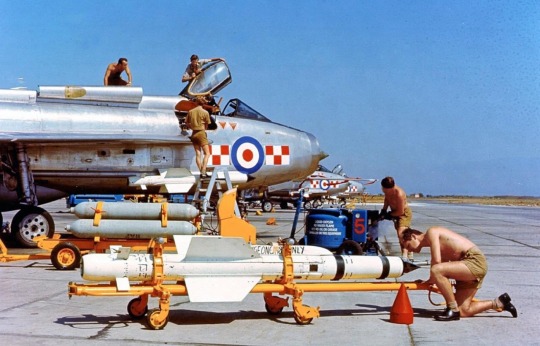
1) No. 56 (F) Sqn Lightning F.3 having Firestreak missiles loaded RAF Akrotiri, Cyprus, 1963.
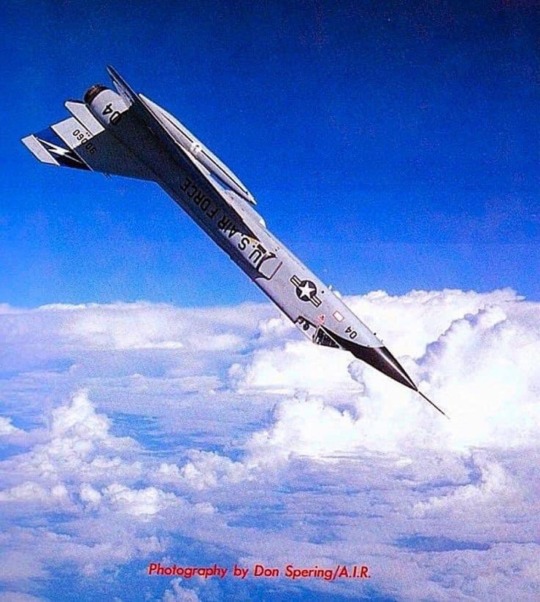
A Florida F-106 Delta Dart Up and Over!

19 March 1959. First flight of the Boeing NB52A Stratofortress named The High and Mighty One with the X-15.
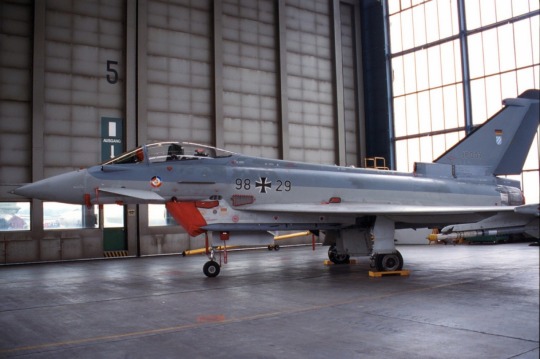
27 March 1994. First flight of the Eurofighter Typhoon DA1 from DASA at Manching. Powered by two RB199 engines. Canard-delta wing,
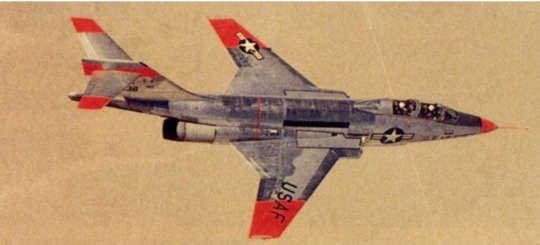
27 March 1957. First flight of McDonnell F-101 Voodoo F-101B-30-MC (56-0232) designated NF-101B from Lemburg Field. Two seat all-weather interceptor.

Colorized photo of a Grumman F14F Hellcat II taking down a Japanese Zero, circa 1945.

Corsairs on the ramp at the Planes of Fame Air Museum Airshow in Chino Valley, CA
5 notes
·
View notes
Note
it's spooky month, what's the scariest plane to you?
Oooh, that's an interesting question! I was initially of three minds on this: should I go with spookiest name? Spookiest looking? Or the one that straight-up scares me the most.
I have some ideas for all three:
Spookiest Name: The McDonnell CF-101 Voodoo (oooh, scary)

The McDonnell CF-101 'Voodoo' was an all-weather interceptor adopted by Canada's branch of NORAD as a replacement for the obsolescent CF-100 'Canuck', after Diefenbaker killed the Avro CF-105 'Arrow' (which a lot of people are still very angry about) their main armament consisted of the AIR-2A 'Genie' unguided nuclear tipped rocket (who's adoption caused a scandal that directly caused the collapse of the Diefenbaker government)
A plane called Voodoo letting a nuclear Genie out of the bottle? Now that's spooky!
Spookiest Looking: The Flying Tiger's P-40 Warhawk

Since time immemorial, humans have been decorating their weaponry with the image of fearsome predators, and the P-40 Warhawks belonging to the American Volunteer Squadron in China (better known as the infamous 'Flying Tigers') are no exception. With their infamous and terrifying "sharktooth" paint schemes, these planes gave good service supporting the Nationalist Chinese Government against the invading Imperial Japanese Army. Many of the United States' top air aces of the Second World War started out in the Flying Tigers.
Scariest overall: the Gee-Bee R-series Air Racers

This was a very difficult choice, there's been plenty of aircraft that were infamously difficult and dangerous to fly, for instance, specifically in West German service, the F-104 'Starfighter' (Seriously, Stuka, why is that? Y'all seem like the only people who had any serious troubles with that machine) but I think I settled on the scariest of them all. The infamous GeeBee Air Racers

What's that? You don't think they look scary? Think they look like a sewer pipe with wings?
...yeah, that's what people thought at the time too.
Designed around the then-brand-new Pratt and Whitney R-1340 Wasp radial engine, delivering well over 800 horsepower, they were built for one purpose and one purpose only: to have the absolute most engine possible for the absolute least plane... At the expense of literally everything else. Weighing only 1840 lbs (843 kg) dry, they were built to dominate the air races of the 1930's. Piloted to victory by Jimmy Doolittle (yes, that Jimmy Doolittle) in the 1932 Thompson Trophy Race, easily lapping all but one other aircraft and setting an official record of 296.3 mph. It was destroyed in a fatal crash one year later, killing pilot Russell Broadman.
Doolittle was quoted as saying "I didn't trust the little monster... flying it was like balancing a pencil on the tip of your finger". The wreckage of the R-1 was rebuilt with parts from her (also-crashed, though non-fatally) sistership, the R-2, and turned into what was dubbed the "Gee-Bee long tail". It was purchased by Cecil Allen after it was crashed yet again (forcing it's builders, the Grandville brothers, to declare bankruptcy) who redesigned the wing and added a new, larger fuel tank. Warned strongly by the Granvilles to not fly with that tank filled as it would disrupt the center of gravity, Allen didn't heed the warnings. On the morning of the 1935 Bendix trophy race, he took off from Burbank with all tanks full, wallowed, and crashed into a field just beyond the runway, killing him instantly and writing a sad end to the sega of the R-series GeeBees.
1 note
·
View note
Text

F-101B Voodoo at Ellington AFB TX
@headdancer7 via X
#f 101 voodoo#mcdonnell douglas aviation#reconnaissance#aircraft#usaf#aviation#vietnam war aircraft#cold war aircraft
28 notes
·
View notes
Text
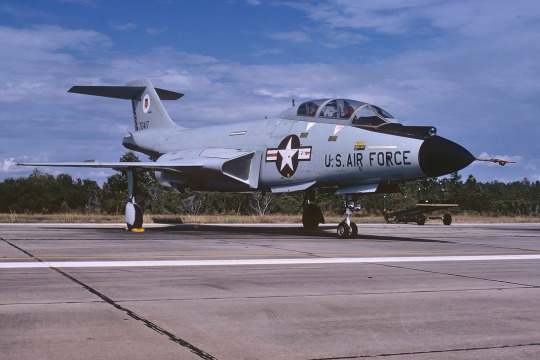
McDonnell F-101 Voodoo of the USAF Air Defense Weapons Center at Tyndall AFB
83 notes
·
View notes
Photo






US Navy surveillance of the first Soviet F-class submarine to surface near the Cuban quarantine line (October 25th, 1962).
A Lockheed P-2 Neptune patrol plane flies over a Soviet freighter (October/November 1962).
The Soviet ship Kasimov removes 15 Soviet Ilyushin Il-28 aircraft from Cuba (October/November 1962). The USSR was in the process of providing them for local assembly in Cuba, but this was halted by the missile crisis, and Khrushchev agreed to remove them.
Soviet personnel and six missile transporters are loaded onto a Soviet ship in the Port of Casilda (Cuba, November 6th, 1962). The RF-101 reconnaissance jet taking the photograph casts a shadow on the lower right.
A Soviet submarine near the Cuban coast controls the withdrawal of Soviet missiles in accordance with the US-USSR agreement (November 10th, 1962). American planes and helicopters flew at a low level to keep watch on the dismantling and loading operations, and Americans warships watched over Soviet freighters carrying the missiles back to the USSR.
The USS Dahlgren (DDG-43), a guided missile ship, trails the SS Leninsky Komsomol as it departs the Port of Casilda (Cuba, November 10th, 1962).
#history#military history#naval history#politics#nuclear warfare#photography#transport#cold war#cuban missile crisis#usa#ussr#cuba#port of casilda#lockheed u-2#ilyushin il-28#mcdonnell f-101 voodoo#uss dahlgren (ddg-43)#ss leninsky komsomol
78 notes
·
View notes
Text
Seekers special:
Starscream:(Instead of being a treacherous yet Incompetent fool, this Starscream is still ambitious but also has skill and wisdom to back up his Ambition.
Despite he wished to be a scientist, Starscream was nontheless forced into Cybertronian military service he was built for and was only permitted to join the science academy when Sentinel Prime took Power. And after he was wrongfully persecuted and stripped of all chances in the Clampdown as Zeta Prime took Power, Starscream would soon find himself in Kaon's Underworld where he met Megatron and joined him in the Decepticon cause as his advisor and personal strategist.
After the disappearance of Megatron aboard the war Cruiser Victory, he would be forced to the helm of the Deception alongside fellow Megatron's right hand Soundwave and Shockwave, although he would soon find it way over his head as other Decepticon commanders and generals becomes Warlords in pursuit of Total control of the Decepticons, and he would lead the Battleship Nemesis in an attempt to Decapitate Autobot's command structure in destroying the "Transport ship" Ark with Optimus Prime on board, and after Landing on Earth, he would be the first to discover that Victory also crash Landed on the planet, and began his plan to recover Megatron. )

Bristol Beaufighter(WWII)
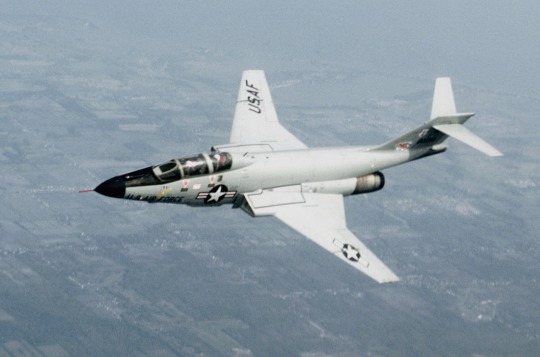
McDonnell F-101 Voodoo(Earth Campaign)
(He would be a F-15 by the time of 1980s)
Thundercracker:(the largest of the Original trio, Thundercracker was most prideful of his acrobatic skills. He was forced into Cybertronian Military service by the Functionists, forced into Decepticon service by the fellow Seekers, and can only find pleasure in duels against adversaries he deems worthy as his sympathy and empathy makes him a subject of ridicule by many of his fellow Decepticons, and when Megatron announced the dissolution of the Decepticons, Thundercracker was probably the fastest to rip off the badge and enjoy the new freedom. )
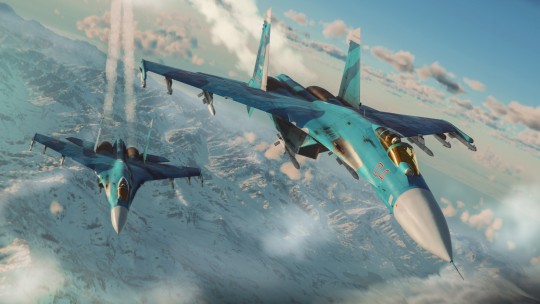
Sukhoi Su-27SM
Skywarp:(a Hybrid unit of Point One Percenter spark and cold constructed Seeker body, Skywarp was subjected to experiment which would make him Capable of teleportation. However, the inhumane living condition during the experiment caused him to be defective in mental development, which causes him to act rather immature Sometimes and often prefers to play pranks instead of actually doing battle with his Power.
After the Nemesis crew discovering the wreck of Victory, Starscream and Soundwave did considered turning Skywarp, still in statsis, into a teleporter; However, the plan fell through due to the complexity of his internal mechanism. )

Panavia Tornado GR4
(Coneheads in this universe are made as tougher version of Seekers with wings' leading edge pointed up, and doesn't always have wings on legs)
Thrust:(Loud, brash and fast-thinking, Thrust was a Drill Sergant of the Cybertronian military before the war who joined the Decepticon after Zeta Prime cut his subsidy in maintenance and increased the cost of insurance. He was less concerned by the war and more concerned with the thrill of the battle itself. )

Grumman F-14 Tomcat
Dirge:(another Seeker who wished to be able to pursue a career not in military, Dirge spends a lot of his time either brooding away from others or letting out his rage Against his enemies. After being coerced into the Decepticons, not much was changed until the end of the war which allowed him to finally pursue his dream of opera. )

Dassault Super Entandard
Ramjet:(Impulsive and Reckless are both a massive understatement to describe Ramjet. He was disciplinary actioned and dishonorable Discharged from the Cybertronian military after shooting a wounded fellow Seeker for slowing down, Ramjet was briefly employed by Megadeath as an enforcer until he turned a regular Robbery into an act of terror which ended with him in prison until being broken out by other Decepticons.
However, after the Nemesis and Ark's disastrous pursuit, Ramjet would Crash land into a country that was devastated by war, where he would witness countless horror and Resistance while in stasis before being discovered by the humans and taken into custody, where they would research on him and attempted reeducate him. )

Chengdu J-8F
Slipstream/Novastorm:

SAAB JAS-39 Gripen
Wingstun/Acid Storm:

SEPECAT Jaguar
Nacelle:
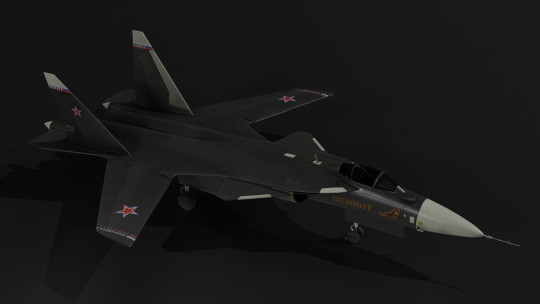
Sukhoi Su-47
Alternate mode(Earth mode) of some of the evergreen Transformer Character in my AU/Storyline: (color Maybe not representative of Character)
Optimus Prime:

Scania R 770 Semi tractor(regular mode)

Edison Motors Model BDE Diesel Electric Semi tractor(Super mode)
Megatron:

Belyy Tigr(WWII)

M110 203 mm self-propelled howitzer(Earth Campaign)


Armored Recovery Vehicle(post-war)
Knockout(the red Decepticon Medic):

Alfa Romeo 8C Competizione
Bumblebee:

Ford Ka(inexperienced)

VW Golf R/GTI(veteran)
Cliffjumper:

AMC Hornet SC 360
(to be continued)
#transformer design#transformers design#Transformer Character#Transformers Character#original character design#Transformer Character design#Transformers Character design#fictional worldbuilding#fictional character design#fictional character#fictional characters
20 notes
·
View notes
